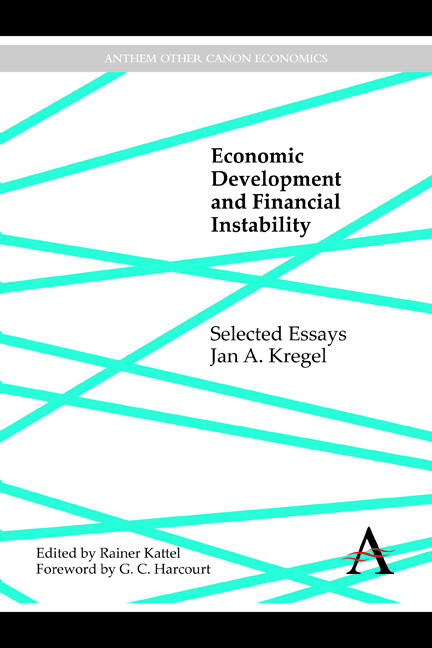Book contents
- Frontmatter
- Contents
- Foreword
- Publication History
- I Theoretical Discussions
- 1 Financial Markets and Economic Development: Myths and Institutional Reality
- 2 External Financing for Development and International Financial Instability
- 3 Capital Flows: Globalization of Production and Financing Development
- 4 Some Risks and Implications of Financial Globalization for National Policy Autonomy
- 5 Two Views on the Obstacles to Development
- 6 Can We Create a Stable International Financial Environment that Ensures Net Resource Transfers to Developing Countries?
- 7 Natural Instability of Financial Markets
- 8 Trying to Serve Two Masters: The Dilemma of Financial Regulation
- II Finance for Development
- III The Crisis in the US and the EU
- Index
2 - External Financing for Development and International Financial Instability
from I - Theoretical Discussions
Published online by Cambridge University Press: 05 November 2014
- Frontmatter
- Contents
- Foreword
- Publication History
- I Theoretical Discussions
- 1 Financial Markets and Economic Development: Myths and Institutional Reality
- 2 External Financing for Development and International Financial Instability
- 3 Capital Flows: Globalization of Production and Financing Development
- 4 Some Risks and Implications of Financial Globalization for National Policy Autonomy
- 5 Two Views on the Obstacles to Development
- 6 Can We Create a Stable International Financial Environment that Ensures Net Resource Transfers to Developing Countries?
- 7 Natural Instability of Financial Markets
- 8 Trying to Serve Two Masters: The Dilemma of Financial Regulation
- II Finance for Development
- III The Crisis in the US and the EU
- Index
Summary
I. External Financing for Development and Net Transfers of Real Resources
The history of official support for a policy of positive resource transfers
One of the interesting paradoxes of development policy is the widespread acceptance of the necessity of external financing for successful economic development and the historical persistence of net financial flows from developing to developed countries. From the first UN resolutions on financing development, to the creation of the International Finance Corporation in the IBRD, to the UN Special Fund and the UNDP, to the First UN Development Decade, and the Alliance for Progress, up to the recent Monterrey Consensus, the thrust of international development policy has continued to stress the importance of high and stable capital flows from developed to developing countries, although the central role in the process has shifted from emphasis on multilateral and bilateral official flows to private flows.
One of the major recommendations of the Committee of Twenty, formed to propose a reform of the international monetary system after the breakdown of the dollar peg to gold in 1971, led to the creation of a Joint Ministerial Committee of the Boards of Governors of the Bank and the Fund on the Transfer of Real Resources to Developing Countries to study and recommend measures on the broad question of the transfer of real resources to developing countries, which the Committee agreed should be given encouragement.
- Type
- Chapter
- Information
- Economic Development and Financial InstabilitySelected Essays, pp. 15 - 40Publisher: Anthem PressPrint publication year: 2014



